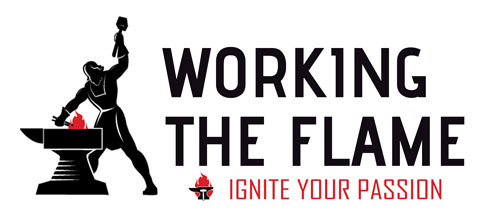Is Glass Blowing Dangerous? Common Glass Blowing Accidents & Workplace Hazards.
It is no surprise that glass blowing is a potentially dangerous hobby and occupation. There are many factors to consider when determining workplace hazards and the risk of accidents, but in general, precautions should be taken when glass blowing.
Below are the most common hazards and accidents that can occur within a glass blowing studio. Having proper ventilation and personal safety equipment will help prevent many accidents and long-term health issues, as will properly handling all tools and glass objects.
Whether you have been glass blowing for years or are just starting, it is worthwhile to know the risks associated with the craft.
Common Glass Blowing Accidents and Hazards

High Heat & Burns
Perhaps the most obvious hazard in the glass blowing studio is the high temperature of furnaces and glass and the risks of burns. Furnaces and annealers are used at temperatures ranging from 1,000 to 2,000 degrees Fahrenheit. Repeated exposure to these high temperatures increases an artist’s risk for serious burns.
Because studios can reach temperatures of up to 130 degrees Fahrenheit if not properly ventilated, basically every surface in a glass blowing studio is hot. Burns can happen from reaching for hot tools or touching other hot metal surfaces. Heat stroke is a serious risk if a glass blower works too long without breaks.
Cuts
Working with glass will of course expose you to cuts. Shattered glass shards can fly across your workspace and cause deep injuries. Other more minor cuts from sharp edges of glass are also common.
Fumes
Glass blowers are exposed to chemical fumes as they heat glass to extremely high temperatures. While exposure to fumes is not completely avoidable, good ventilation is extremely important and can make all the difference to your lung health when working in the studio for long periods of time.
Long-Term Health Risks & Life Expectancy of Glass Blowers

Long-Term Risks
Over time, heat exposure from hot furnaces and overall warm studios can damage a glass blower’s lungs and airways. High temperatures and the bright light of the glory hole can also cause severe eye damage known as “glass blower’s cataracts”.
Chronic pain is another potential side effect of glass blowing. The repeated, sometimes awkward movements performed every day can lead to carpal tunnel syndrome and other muscle and joint problems.
Finally, the most serious chronic conditions may include certain forms of cancer. More research is needed, but it is thought that long-term glass blowing can put you at increased risk of developing lung, stomach, colon, and bladder cancers. This is due to exposure to chemicals in soda lime, borosilicate and other types of glass.
Estimated Life Expectancy of Glass Blowers
There is not any conclusive data regarding the life expectancy of glass blowers. Many factors contribute to the health of glass workers and it is not easy to come up with a specific answer.
How glass blowing will effect you long-term will vary depending on how often you blow glass, the techniques and tools you use, studio ventilation, genetics, and more.
Certain cancers are more deadly than others, and glass blowing does pose a risk of developing one or more types of cancer when performed over a long period of time.
Any health concerns related to glass blowing should be discussed with a medical professional.

